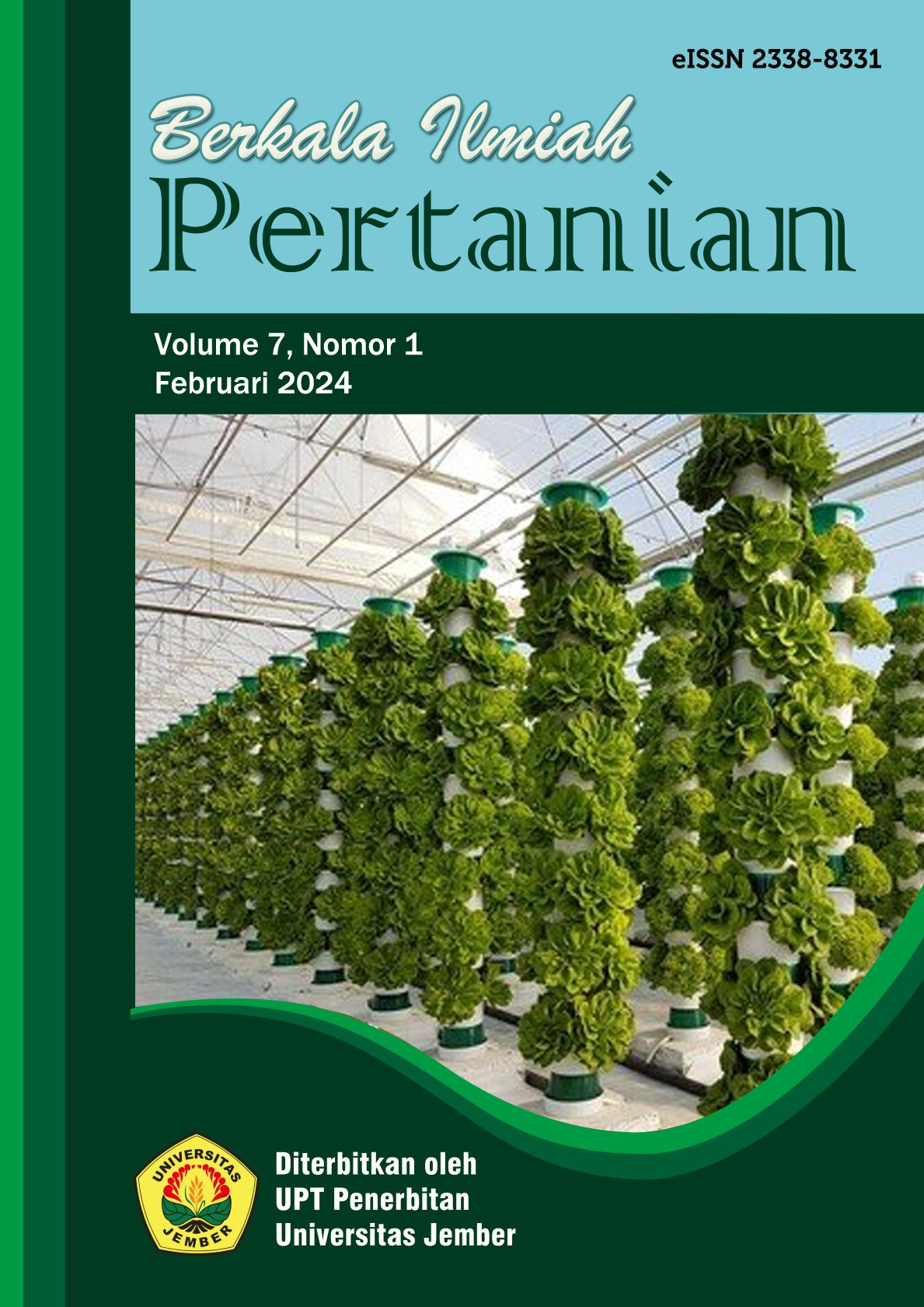Pengaruh Pemberian Kompos dan ZPT Nabati dari Ekstrak Jagung Terhadap Pertumbuhan dan Hasil Tanaman Tomat (Solanum lycopersicum)
Abstract
Tomato (Solanum lycopersicum) is a plant that is widely grown in Indonesia. Market demand for tomatoes is high when compared to other fruit and vegetable commodities. Price instability can be caused by several factors, including decreased crop productivity. Providing nutrition that is considered safe is by using organic materials on agricultural land, which is one solution to the problem of land degradation. Providing compost and vegetable PGR from corn extract are organic additives that are safe to use in cultivation activities. VegetablePGR from corn extract contains the cytokinin hormone which plants need for the growth process. This research was conducted in a Greenhouse located in Martopuro Village, Pasuruan Regency. The experiment was carried out factorially using the basic pattern of Completely Randomized Design (CRD). The observed variables included plant height, leaf area index, percentage of flowers becoming fruit, number of fruit, fruit diameter, fruit weight, vitamin C content. The data obtained through measurements were then analyzed using Analysis of Variance (ANNOVA). If the results of the ANNOVA analysis show significantly different results, it is necessary to carry out further tests using the Duncan Multiple Range Test (DMRT) with a confidence level of 95%. The research results showed that the interaction of compost and vegetable PGR from corn extract showed very significantly different results on plant height variables. The single compost treatment showed significantly different results on the variables of plant height, leaf area index and number of fruit. The single plant PGR factor from corn extract showed significantly different results on the leaf area index variable.

This work is licensed under a Creative Commons Attribution-NonCommercial 4.0 International License.
Authors who publish with this journal agree to the following terms:
1.Authors retain copyright and grant the journal right of first publication with the work simultaneously licensed under a Creative Commons Attribution-NonCommercial 4.0 International License that allows others to share the work with an acknowledgement of the work's authorship and initial publication in this journal.
2.Authors are able to enter into separate, additional contractual arrangements for the non-exclusive distribution of the journal's published version of the work (e.g., post it to an institutional repository or publish it in a book), with an acknowledgement of its initial publication in this journal.
3.Authors are permitted and encouraged to post their work online (e.g., in institutional repositories or on their website) prior to and during the submission process, as it can lead to productive exchanges, as well as earlier and greater citation of published work (See The Effect of Open Access).

















